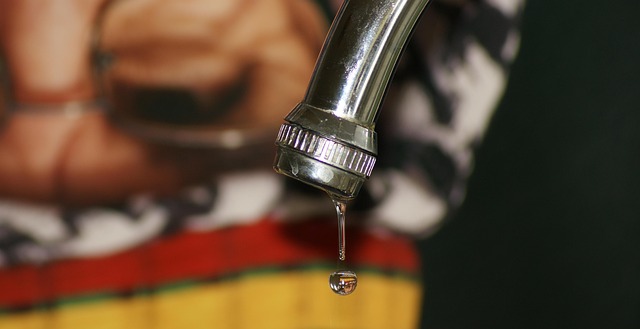Sediment buildup in water heaters, caused by minerals in tap water, reduces efficiency and can damage heaters. Regular flushing (every 3-6 months) prevents this by removing thick layers of sediment that insulate water from heating elements. This simple process involves shutting off the water supply, draining the tank, and removing debris, enhancing heat distribution and extending heater lifespan while avoiding costly fixture replacement.
“Learn how to flush your water heater to remove harmful sediment buildup, a crucial maintenance step often overlooked. Discover why this simple process is essential for optimal heating performance and prolonged tank life. This guide covers everything from understanding sediment issues to providing a step-by-step flushing tutorial and regular maintenance tips. Equip yourself with the knowledge to keep your water heater running smoothly, potentially extending its lifespan and avoiding costly fixture replacement.”
- Understanding Sediment Buildup in Water Heaters
- Why Flushing is Essential for Maintenance
- Tools and Safety Precautions Needed
- Step-by-Step Guide to Flushing Your Water Heater
- Regular Maintenance Tips to Prevent Sediment Accumulation
Understanding Sediment Buildup in Water Heaters

Sediment buildup in water heaters is a common issue that can lead to reduced heating efficiency and even damage to the heater itself. Over time, minerals and other contaminants present in tap water can accumulate at the bottom of the tank, forming a thick layer of sediment. This not only reduces the heater’s ability to transfer heat effectively but also restricts water circulation, potentially causing hot spots and uneven heating. Regular flushing is an essential maintenance practice to mitigate these issues. By removing sediment buildup, homeowners can extend the lifespan of their water heaters and ensure optimal performance.
Understanding when and how to flush your water heater is crucial for maintaining a healthy plumbing system. Sediment accumulation is often more pronounced in areas with hard water, where higher mineral content contributes to faster buildup. Regular flushing, typically recommended every 3-6 months, helps prevent fixture replacement and costly repairs associated with severely clogged heaters. It’s a simple process that involves shutting off the water supply, draining the tank, and cleaning any debris or sediment left behind.
Why Flushing is Essential for Maintenance

Regularly flushing your water heater is an essential maintenance practice that can significantly extend its lifespan and ensure optimal performance. Sediment buildup, over time, can clog the heater’s elements and insulate the water from the heating source, leading to inefficiencies and potential damage. This process becomes even more crucial for older heaters or those in areas with hard water, where mineral deposits can accelerate sediment accumulation.
By flushing, you remove these sediments, preventing them from settling at the bottom of the tank. This simple step allows for better heat distribution, enhances water circulation, and reduces the risk of element failure. Moreover, it’s a cost-effective way to avoid costly fixture replacement due to heater malfunction, ensuring your system runs smoothly and efficiently.
Tools and Safety Precautions Needed

To flush a water heater for sediment removal, you’ll need a few basic tools and supplies, including a garden hose, a bucket, and possibly a pump (for faster flushing). Always wear protective gear such as gloves to prevent burns from hot water and eye protection when handling any debris. Ensure the area is well-ventilated during the process. If your water heater is in a confined space, consider opening nearby windows or doors to facilitate air circulation.
Before beginning, shut off the cold water supply valve connected to the heater. This prevents any unexpected water flow during flushing and ensures your safety. Next, attach the garden hose to the drain valve on the bottom of the water heater. Aim the hose towards a safe drainage area, like an outdoor sink or a bucket placed below the heater. Once everything is set up, open the drain valve slowly to allow sediment to discharge, taking care not to overflow the bucket or hose.
Step-by-Step Guide to Flushing Your Water Heater

Flushing your water heater is an essential maintenance task that can help extend its lifespan and ensure efficient heating. Here’s a step-by-step guide to get the job done safely and effectively. Start by shutting off the cold water supply valve located at the base of the heater. This prevents any unexpected hot water discharge during the flushing process. Next, attach a garden hose to the heater’s drain valve, ensuring it’s long enough to reach a safe distance away from the heater to catch any potential overflow. Open the drain valve slowly, allowing sediment and built-up debris to flow out onto the hose. Keep flushing until the water runs clear, indicating that most of the sediment has been removed. Once finished, close the drain valve tightly, then reopen the cold water supply valve to allow fresh water to fill the heater back up. Regularly flushing your water heater, typically every 3-6 months, can prevent fixture replacement and costly repairs down the line.
Regular Maintenance Tips to Prevent Sediment Accumulation

Regular maintenance is key in preventing sediment buildup, ensuring your water heater functions optimally and extends its lifespan. One preventive measure involves periodically flushing the heater to remove any accumulated sediment. This process involves shutting off the cold water supply, draining the tank, and scrubbing the internal components to dislodge any deposits.
Additionally, keeping up with fixture replacement is essential. Over time, components like dip tubes and pressure relief valves can degrade or become clogged, contributing to sediment accumulation. Regularly inspecting these parts and replacing them as needed can significantly reduce the risk of sediment buildup in your water heater.
